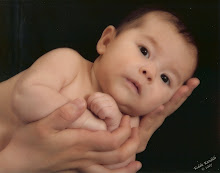Kawasaki disease rate in San Diego County
Two specialists join Kawasaki disease team ..
Email this article..
Date: 2008-07-24Contact: Kim EdwardsPhone: (619) 543-6163Email: edwards@ucsd.edu
For more than 30 years, pediatrician Jane Burns, M.D., has dedicated her research to solving the mystery of Kawasaki disease (KD), a childhood illness characterized by fever, rash, red eyes, red lips, and red hands and feet that can lead to serious heart disease. As professor and chief, Division of Allergy, Immunology and Rheumatology in the UC San Diego Department of Pediatrics, Burns has added two new specialists to her internationally recognized team to further expand the major effort she is leading to collect data regarding KD in culturally diverse "at risk" populations. "Of the children who get KD, 25 percent will develop coronary artery damage if not treated. This irreversible damage to the heart can lead to a heart attack, or even heart failure requiring a transplant. It's a very treatable condition and yet, so many physicians and parents just don't know about it," said Burns. Adriana Tremoulet, M.D., assistant professor, UC San Diego Department of Pediatrics and Rady Children's Hospital, San Diego, and Susan Fernandez, M.D., post-doctoral researcher at UC San Diego, will assist Burns with, among other things, reaching out to particularly vulnerable communities that include Latino and Filipino families. Tremoulet's focus will be running clinical trials for promising drugs to treat KD to give patients access to state of the art therapies. In addition, as a KD expert who speaks fluent Spanish, she will work with Spanish-speaking community physicians and parents to educate them about KD. "Information about Latinos with KD is severely lacking," said Tremoulet. "We have data from Japan, China, Korea, India and major U.S. cities, but very little on Latin America. And this disease does not stop at the border." Fernandez, who was a practicing doctor in the Philippines, will be helping increase outreach in the San Diego Filipino community and raise awareness about KD in Filipino families with young children. She also is planning collaborations with researchers at the University of Santo Tomas, Catholic University of the Philippines. Burns and other experts believe the lack of awareness about KD may be due to the fact that KD is often confused with infectious diseases such as scarlet fever and measles. The drug of choice in treating KD is Intravenous Immunoglobulin (IVIG) which is often unobtainable or too expensive for patients being treated in developing countries. Experts predict more than 4,000 new KD patients will be diagnosed in the U.S. this year, and over 10,000 new patients in Japan. An unknown number of patients will not be diagnosed or treated and will develop silent damage that may present as a heart attack or sudden death in an otherwise healthy young adult, decades after the initial injury. Burns added, "We think this is just the tip of the iceberg. These are the cases that are identified. We've no idea how many more cases go untreated. We hope our outreach, in San Diego, and around the globe, will help change that." About Kawasaki disease: Kawasaki Disease is not a rare illness but it is most prevalent in Japan. In San Diego County, 20 to 30 children per 100,000 children less than 5 years of age are affected each year. More than 50 new patients are treated annually at Rady Children's Hospital, San Diego. The illness is four to five times more common than some more publicly recognized diseases of children such as tuberculosis or bacterial meningitis. If untreated, KD can lead to lethal coronary artery aneurysms. KD tends to run in families, suggesting that there are genetic components to disease risk. It is also 10 to 20 times more common in Japanese and Japanese American children than in children of European descent.
Saturday, May 2, 2009
Subscribe to:
Post Comments (Atom)




































No comments:
Post a Comment